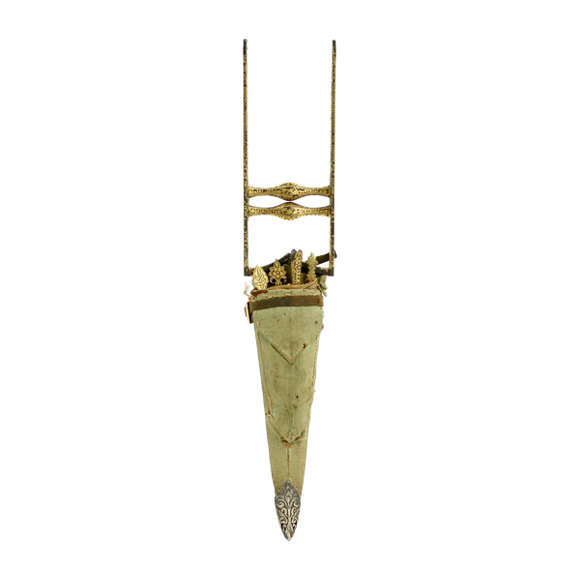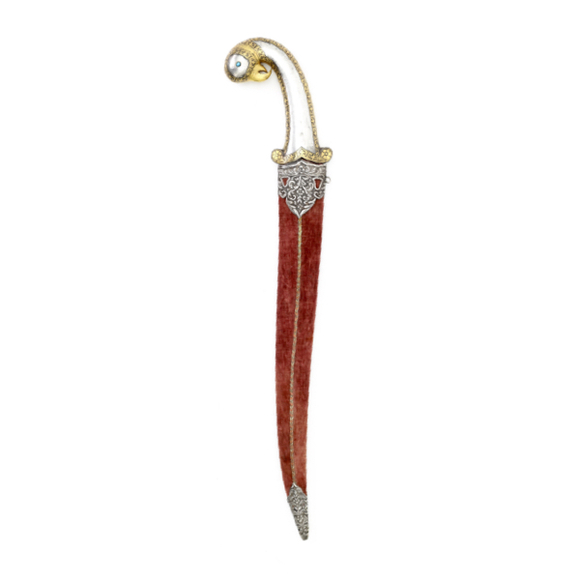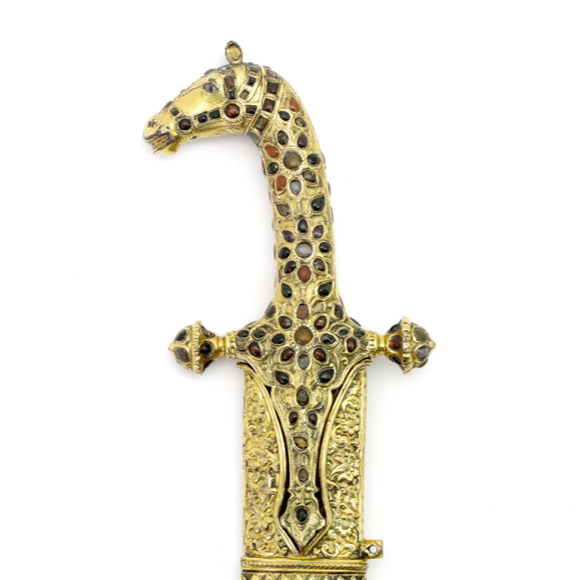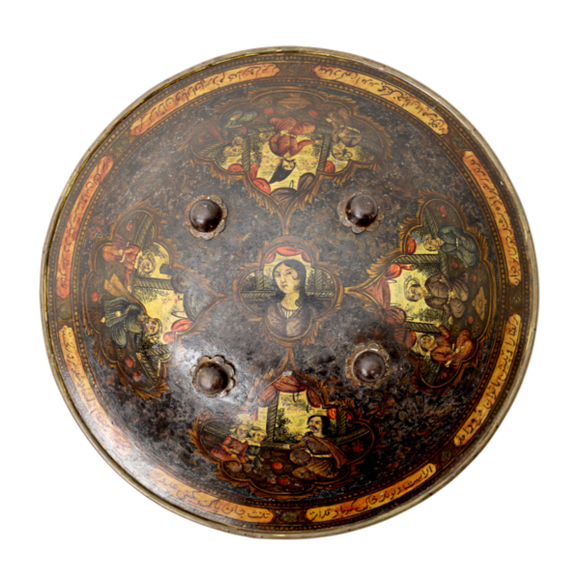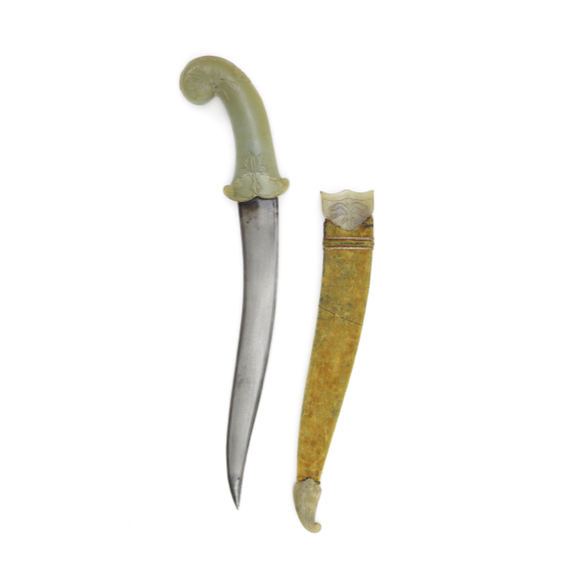Language: Persian
Origin: Steingass, 1898.
Description
Sipar (سپر) is the Persian word for "shield". It was also adopted in North India, written sīpar (सीपर).1
Persian shields were often made of steel. Decorations included chiseling and inlay and overlay with gold and silver. Some of the more prized shields were made of wootz steel, called sīpar fouladi (सीपर फौलादि).
Notes
1. Francis Joseph Steingass; A Comprehensive Persian-English dictionary, including the Arabic words and phrases to be met with in Persian literature. London: Routledge & K. Paul, 1892. Page 651.
In the literature
Hendley describes a number of steel shields in the contents of the Alwar armoury in 1888.1

Plate XXX
Sipar Fouladi. Shield. Steel, with raised floral pattern,which is damascened with gold. There are four bosses, each connected by raised open-work semi-circles with an outer crenated ring. The embroidered red velvet lining is attached to the edge of the shield with wire. The maker is unknown, but it was obtained from Hyderabad, in the Deccan, about fifty years ago, at a cost of Rs 1000. About Rs. 100 worth of gold were used in making it; and the steel, which came from Ispahan, is worth about Rs. 400. Diameter 21 inches.

Plate XXXIII.
(1) Shield. Sipar-i-Shikargah. Hunting shield of steel, having a row of raised animals, which are fastened on with gilt pins. The edge is raised, and has its dentations pointing inwards. There are four bosses and a star-shaped centre. The ornament is damascened in gold. The shield was made at Sialkot, and cost R.s 125, of which the steel is worth Rs. 25, and the gold Rs. 60; the balance of Rs. 40 gives the value of the labour. Diameter, 14 inches.
(2) Shield. Sipar-i-Ganga-Jamni. Steel, inlaid with gold on a silver ground. Besides a crescent at the top, there are four bosses and a central ring. The pattern is composed of eight interlacing circles with chrysanthemum or daodi flowers. The rim is raised and toothed.
The shield was made at Sialkot.
Total cost, Rs. 65; gold and silver, Rs. 30; steel, Rs. 15; labour, Rs. 20.
Diameter, 13 inches.
(3) Shield. Sipar-i-Ganga-Jamni. Steel, inlaid with gold on silver. Rim dentated; outer border, scroll and floral pattern. Four raised bosses and crescent, all having perforated edges and without rims. The bosses are attached by quatre foil headed nails to the shield.
Made at Sialkot.
Total cost, Rs. 105; silver and gold, Rs. 50; steel, Rs. 15; labour, Rs. 40.
Diameter, 17 inches.
(4) Shield. Sipar-i-Fouladi. Steel inlaid with gold. There are two rings of ornament connected by inlaid bands. The four bosses are raised and have perforated rims.
Made at Lahore, and purchased for Maharaja Banni Singh.
Total cost, Rs.1000; steel, Rs. 400; gold, Rs. 100; labour, Rs. 500.
Diameter, 21½ inches.
(5) Shield. Sipar-i-Guldastardar. Steel inlaid with gold. Rim raised and toothed. There are four bosses, each at the meeting point of one of the parts of a raised quatre foil ornament. From the centre of each foil hangs a pear-shaped drop, having the point towards the centre of the shield. Made at Sialkot.
Total cost, Rs.125; gold, Rs.50; steel,Rs. 25; labour, Rs.50.
Diameter, 15 inches.
(6) Shield. Sipar-i-Chauddar. Steel inlaid with gold; raised rim; there are four bosses and a crescent.
Made at Sialkot.
Total cost, Rs.200; gold, Rs.100; steel, Rs.20; labour, Rs.80.
Diameter, 16 inches.
(7) Sipar-i-Ganga-Jamni. Steel inlaid with gold and silver. There are four bosses, separated by as many pear-shaped Kashmir figures.
Made at Sialkot.
Total cost, Rs. 150; gold and silver, Rs. 70; steel, Rs. 30; labour, Rs. 50. Fine work, but superficial.
Diameter, 20½ inches.
The above shows that at the time, the wootz shields could be over 10 times the value of a regular steel shield.
Notes
1. Thomas Holbein Hendley; Ulwar and its Art treasures. W. Griggs & Sons, Ltd. London 1888. Plate XXX.

